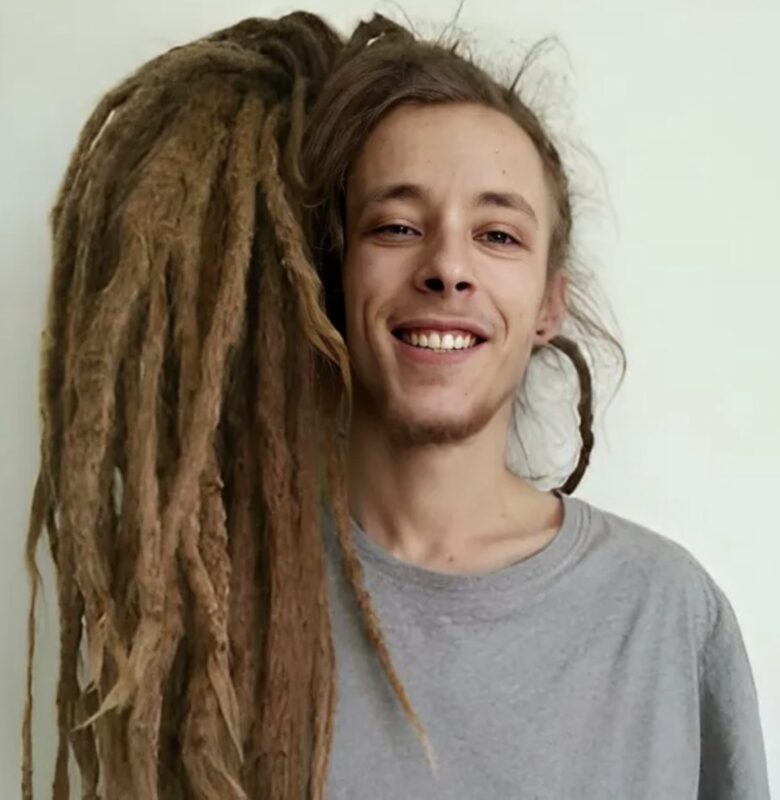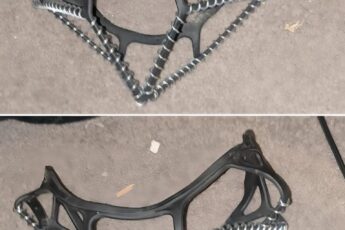For years, a young man was known for his distinctive hair—dreadlocks so long and thick they were akin to braided ropes, cascading down his back and reaching all the way to his legs. These locks had become an integral part of his identity, a statement as much as a style, and had been with him for over a decade. But in a surprising twist, he made the bold decision to cut them—a move that stunned everyone who knew him. This wasn’t just a haircut; it was a transformation that would turn heads and spark conversation.
This wasn’t a decision made lightly. His dreadlocks had been a labor of love, taking days to cultivate just right and years to maintain. Dreadlocks can evoke a range of opinions and emotions. For some, they are a powerful form of self-expression—a distinctive style reflecting cultural heritage or personal beliefs. To others, they might seem simply as tangled, matted hair, a curiosity rather than a conscious choice.
The dedication required for such a hairstyle is not to be underestimated. The formation of dreadlocks typically involves extensive grooming habits and techniques, necessitating patience and commitment. Those who wear them often feel a deep connection to their personal identity. For some, cutting these locks might suggest a kind of shedding or renewal, as though embracing a new chapter.
After 12 long years, this man’s hair had grown so long and thick that ordinary scissors just couldn’t slice through the mass of hair. It took a considerable effort—a testament to both the resilience of his locks and the steadfastness of those who helped him. It became a humorous yet daunting challenge, like a modern-day Samson story, reshaped by today’s lens.
Finally, after much effort and perhaps with a sigh of nostalgia, the transformation came to fruition. What happened next was akin to unveiling a new person. Gone were the thick, rope-like locks, replaced by a neat, cropped style that pushed him into a new realm of self-representation. For those who watched the transformation or saw him afterward, the difference was stark and compelling. His new look was refreshing and seemed to exude a newfound sense of freedom and ease.
When he finally saw his reflection, it was as though he was meeting a new version of himself for the first time. It can be a startling experience—seeing oneself anew, stripped of a long-held identity cue. His reaction was one of surprise and perhaps a touch of gratitude for the metamorphosis he had chosen to embrace.
People around him marveled at the significant change. Some commented on how it was hard to recognize him at first glance, his features more pronounced without the frame of his dreadlocks. To others, it was a testament to the ever-evolving nature of personal expression—how a change in appearance can signal broader changes within.
The story of this man’s transformation serves as a gentle reminder of our capacity for change and the symbolism often tied to our hair. For him, this wasn’t just about the physical act of cutting hair but also about embracing a new perspective, a sense of change, and a journey that continues to evolve. Haircuts, like any form of personal change, resonate deeper than aesthetics. They have the power to reflect transitions, milestones, and even the subtle shifts in how we view ourselves in the mirror.
Ultimately, his journey encourages us to consider the ways in which we define ourselves and how, sometimes, the most profound changes are those that bring us back to our roots, setting us on a path toward newfound freedom and discovery. This narrative invites everyone to reflect on their transformations, whatever form they may take, and share in the universal human experience of evolving past, present, and future identity.





